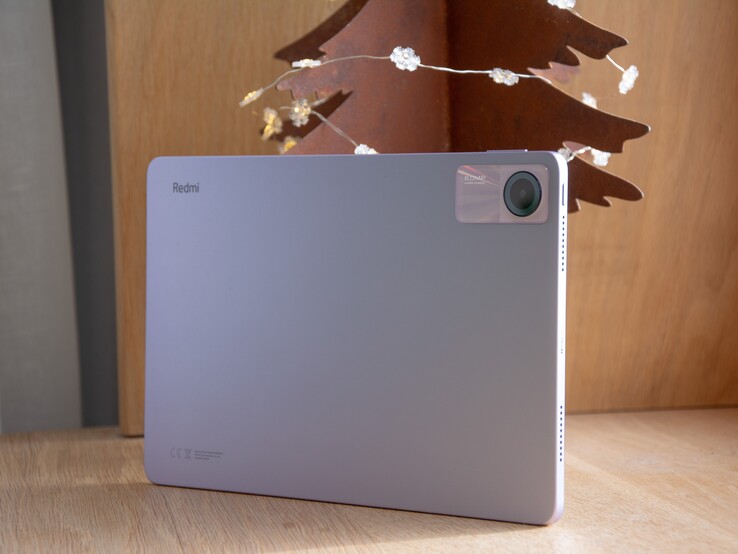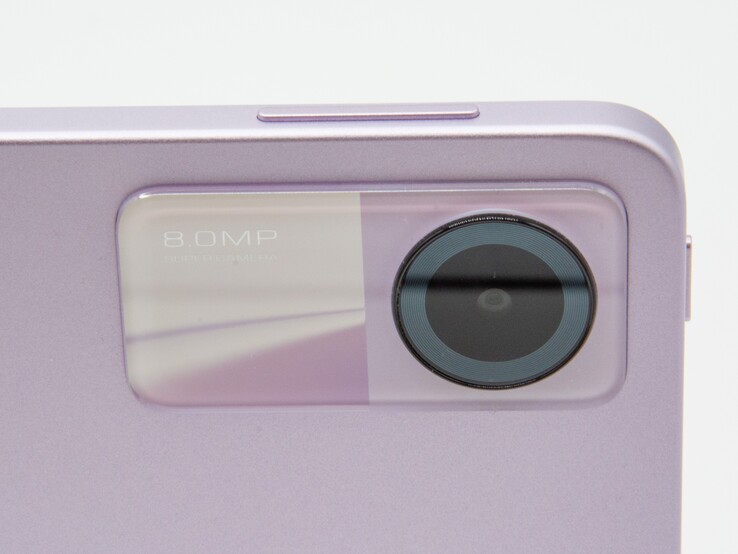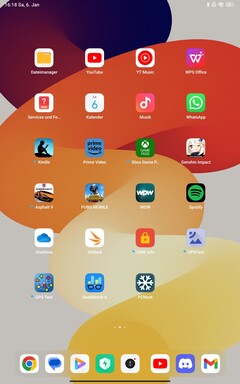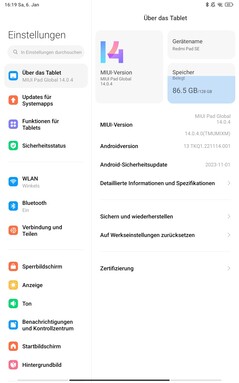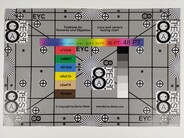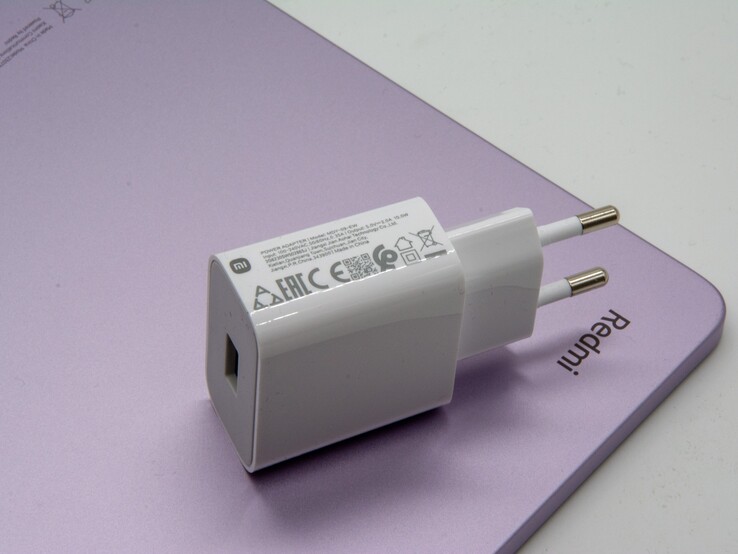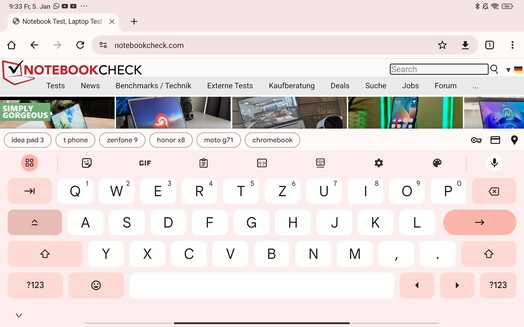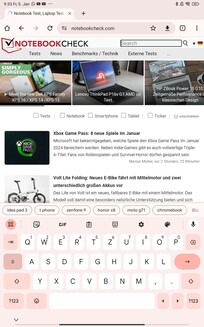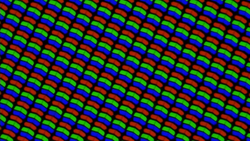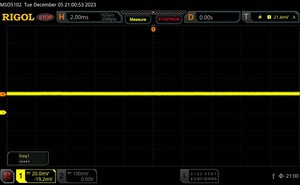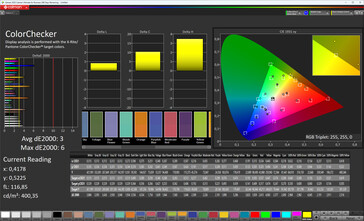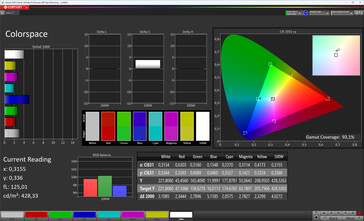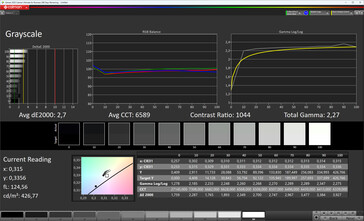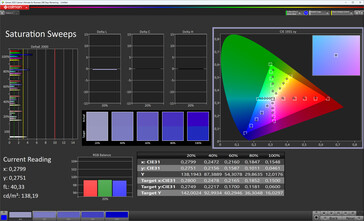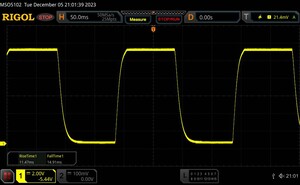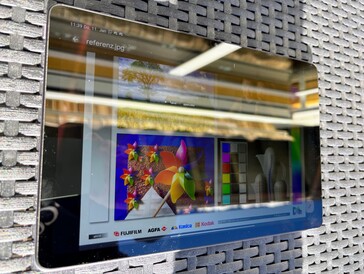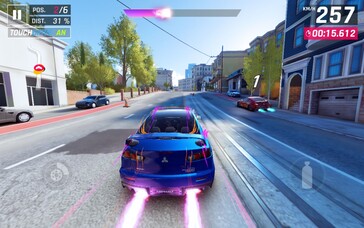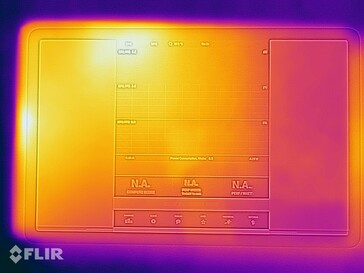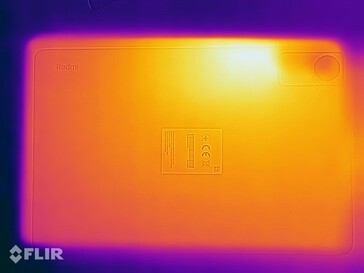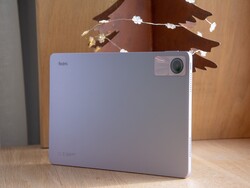Xiaomi Redmi Pad SE tablet review - Downgrade instead of improvement? ↺
The Redmi devices from Xiaomi are usually known for being good value for money. On paper, the Redmi Pad SE fits into this idea well. The SE is the successor to the first Redmi tablet from 2022, the Redmi Pad.
We liked its predecessor's aluminum case, 90-Hz display and good battery life. However, its operation wasn't always smooth and its features were incomplete—we were missing satellite navigation and a fingerprint sensor, to name a few.
The manufacturer offers the tablet in three colors: Lavender Purple, Graphite Gray and Mint Green. Moreover, you can get the Redmi Pad SE in three configurations. The base model features 4 GB RAM and 128 GB storage for US$220. For US$30 more, you get the device with 8 GB RAM. For US$280, the tablet comes with 8 GB RAM and 256 GB storage. Our test sample is lavender-colored and has the base configuration.
Possible competitors compared
Rating | Date | Model | Weight | Height | Size | Resolution | Price |
|---|---|---|---|---|---|---|---|
| 83.5 % v7 (old) | 01 / 2024 | Xiaomi Redmi Pad SE SD 680, Adreno 610 | 481 g | 7.36 mm | 11.00" | 1920x1200 | |
| 84.6 % v7 (old) | 12 / 2022 | Xiaomi Redmi Pad Helio G99, Mali-G57 MP2 | 445 g | 7.05 mm | 10.61" | 2000x1200 | |
| 81.2 % v7 (old) | 01 / 2023 | Huawei MatePad SE SD 680, Adreno 610 | 440 g | 7.9 mm | 10.40" | 2000x1200 | |
| 81 % v7 (old) | 02 / 2022 | Samsung Galaxy Tab A8 2022 T618, Mali-G52 MP2 | 508 g | 6.9 mm | 10.50" | 1920x1200 | |
| 80 % v7 (old) | 03 / 2023 | Lenovo Tab M10 Gen 3 T610, Mali-G52 MP2 | 460 g | 8.5 mm | 10.10" | 1920x1200 |
Case - The Redmi Pad SE with an aluminum body
The Xiaomi Redmi Pad SE has an aluminum unibody case. The tablet feels high-quality, is nice and slim and feels good to hold. Our test sample's build is flawless. The device can barely be twisted and in doing so, you can't elicit any noises from it. The power button and volume rocker have a little bit of give and the pressure points could be a little more crisp.
The four speakers are situated along the short sides of the tablet. Thankfully, the Redmi Pad SE has an audio jack connection on the bottom that we were missing on its predecessor, the Redmi Pad. Its bezels may not be quite as slim as on high-end tablets like the Samsung Galaxy Tab S9, but they are by no means thick. At least they are nice and even.
The camera protrudes a little from the back of the case. If you place the tablet horizontally onto a table, it wobbles slightly when you are typing. With the tablet placed upright, you can type without the device wobbling.
Connectivity - The Redmi Pad SE with microSD support and an audio jack
While the device looks the same as its predecessor, the inside features some changes. On the one hand, the manufacturer has dropped the version with 3 GB RAM and 64 GB storage but on the other hand, Xiaomi's Redmi Pad SE relies on a Snapdragon processor instead of a MediaTek one.
Its storage continues to be expandable via a microSD card. Unfortunately, its USB port is the same, namely USB 2.0. Still, it supports exFAT and NTFS for external storage media. In our copying test using an external Samsung 980 Pro hard drive, we measured a maximum transfer rate of 28.68 MB/s. This means its storage speed is on the same level as the microSD card.
Xiaomi doesn't offer a version of the tablet with LTE reception, and it doesn't support NFC or feature an infrared blaster. As was already the case with its predecessor, the Redmi Pad SE doesn't have a GNSS module, meaning it can't create a satellite connection.
microSD card reader - up to 1TB
The Redmi Pad SE's storage can be expanded with the help of a microSD card—the tablet supports cards with a capacity of up to 1 TB. The pad also supports the exFAT format. In combination with an AV PRO microSD 128 GB V60 reference card, we measured a transfer rate of about 30 MB/s.
This means the tablet can compete with the comparison devices, coming ahead of the Redmi Pad. Only the Samsung Galaxy Tab A8 had even faster data transfer rates.
| SD Card Reader - average JPG Copy Test (av. of 3 runs) | |
| Samsung Galaxy Tab A8 2022 (Angelbird AV Pro V60) | |
| Xiaomi Redmi Pad SE (Angelbird AV Pro V60) | |
| Lenovo Tab M10 Gen 3 (Angelbird V60) | |
| Huawei MatePad SE (Angelbird V60) | |
| Xiaomi Redmi Pad (Angelbird AV Pro V60) | |
Cross Platform Disk Test (CPDT)
Software - Xiaomi promises updates until 2026
The Redmi Pad SE is delivered with Android 13 installed. Furthermore, the manufacturer uses its own user interface, version 14 of MIUI. At the time of testing, the latest Android security patch was from November 2023. According to Xiaomi, the tablet is set to receive security updates until September 2026. These updates are supposed to be supplied every 90 days and the Redmi Pad SE is also set to receive one major update, namely Android 14.
Compared to stock Android, the Xiaomi interface is a little more colourful and there isn't an app drawer. On the flip side, the software features more customization options. Ex-works, 21.5 GB of storage is already in use. Thankfully, there isn't much bloatware installed onto the tablet. Aside from a few Google and Xiaomi apps, only Netflix and WPS Office come preinstalled.
The software allows you to display apps as floating windows. Their sizes can be changed and moved around the screen. Certain apps can be displayed horizontally next to each other, however, not many apps support this. Moreover, Xiaomi offers a conference tool for video calls. This apparently lets you change functions in full-screen mode, such as subtitle transcription.
Communication - The Redmi Pad SE with Wi-Fi 5
As already on the Redmi Pad, Xiaomi has continued to make savings when it comes to the Redmi Pad SE's WLAN hardware: The tablet only supports Wi-Fi 5. However, its transfer rates are class-average. It should be noted that its predecessor seemed to receive data much quicker.
In combination with our reference router, the Asus ROG Rapture GT-AXE11000, the tablet connected quickly. The device showed some fluctuations when it came to receiving data.
| Networking | |
| iperf3 receive AXE11000 | |
| Xiaomi Redmi Pad | |
| Samsung Galaxy Tab A8 2022 | |
| Lenovo Tab M10 Gen 3 | |
| Huawei MatePad SE | |
| Xiaomi Redmi Pad SE | |
| iperf3 transmit AXE11000 | |
| Xiaomi Redmi Pad | |
| Xiaomi Redmi Pad SE | |
| Huawei MatePad SE | |
| Lenovo Tab M10 Gen 3 | |
| Samsung Galaxy Tab A8 2022 | |
Cameras - The Redmi Pad SE is stingy with its details
Photos are no strength of the Redmi Pad SE. The back houses a camera with a resolution of 8 MPix at most. Despite its "Super Camera" branding, the lens only seems to be suitable for snapshots in good lighting conditions or for scanning documents.
The photos are missing details and lots of parts seem to be blurry. In poor lighting conditions, the pictures become unusable. You also shouldn't rely on the digital zoom, as the picture quality declines rapidly.
We prefer the 5-MPix selfie cam much more. Selfies are nice and sharp—at least close up. On the other hand, the background loses a lot of detail. The camera doesn't offer a portrait mode. If you move the tablet around quickly, the image preview sometimes shows some artefacts.
Using both cameras, you can record video at a maximum of 1080p and 30fps. The recordings' sound quality is fine. However, it is missing image stabilization and as a result, videos can quite quickly become wobbly.
The Redmi Pad SE's camera color depiction is fine in good lighting conditions. Dark colors are usually depicted a little lighter. In controlled low-light conditions (1 lux), the Redmi Pad SE's camera is unable to depict any content whatsoever.
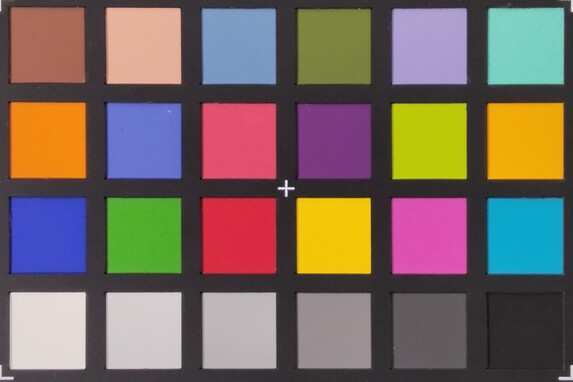

Accessories and warranty - The Redmi Pad SE comes with a power supply
Xiaomi's current Redmi Pad SE comes delivered with a charger. Although it is quite weak (10 watts), it at least comes with a fitting USB cable (USB-A to USB-C). The scope of delivery also includes a short instruction manual, warranty information and a needle to open the microSD slot.
In the United States, the Xiaomi device comes with a standard 12-month warranty. The manufacturer doesn't offer the option to extend this. However, the manufacturer does offer an optional case to go with the tablet.
Input devices & operation - No fingerprint sensor on the Redmi Pad SE
Ex-works, the Redmi Pad SE relies on Google's GBoard keyboard. This makes inputs successful and without any mistakes in portrait mode as well as landscape. The display is nice and smooth and up to ten inputs can be recognized reliably at once—right into the corners.
It's a little annoying that it takes the display a few moments to automatically turn. Sometimes, you end up turning the device back around in the time it takes to react, and by that point, another delayed rotation is triggered.
Xiaomi hasn't installed a fingerprint sensor on the Redmi Pad SE. In turn, you can unlock the device via 2D facial recognition. Two faces can be saved and it is possible to automatically skip the lock screen. Facial recognition works well in portrait as well as in landscape mode. In good lighting conditions, the device is unlocked quickly via the camera. In low light, however, you will have to type in your password or code. The Redmi Pad SE doesn't feature a vibration motor.
Display - Xiaomi has installed a bright panel into the tablet
The Redmi Pad SE's display is good. The manufacturer has installed an 11-inch TFT LCD panel with a maximum refresh rate of 90 Hz into the device. Its refresh rate can be fixed at 60 or 90 Hz, or you can let the software decide on one automatically. According to DRM Info, the panel doesn't just display these two values—it also has the levels 30, 48 and 50 Hz.
Within the comparison field, the Redmi Pad SE boasts the highest measured brightness, namely 473 cd/m³. Although its illumination isn't entirely even, you won't notice this in everyday use. The tablet's automatic brightness adjustment is a bit more of a nuisance. Oftentimes, it works rather slowly and it always picks a very low brightness, requiring you to adjust it manually.
We are happy to report that we didn't note any screen flickering during our tests.
| |||||||||||||||||||||||||
Brightness Distribution: 85 %
Center on Battery: 473 cd/m²
Contrast: 1689:1 (Black: 0.28 cd/m²)
ΔE ColorChecker Calman: 3 | ∀{0.5-29.43 Ø4.79}
ΔE Greyscale Calman: 2.7 | ∀{0.09-98 Ø5}
93.1% sRGB (Calman 2D)
Gamma: 2.27
CCT: 6589 K
| Xiaomi Redmi Pad SE TFT-LCD, 1920x1200, 11" | Xiaomi Redmi Pad IPS, 2000x1200, 10.6" | Huawei MatePad SE IPS, 2000x1200, 10.4" | Samsung Galaxy Tab A8 2022 TFT-LCD, 1920x1200, 10.5" | Lenovo Tab M10 Gen 3 IPS, 1920x1200, 10.1" | |
|---|---|---|---|---|---|
| Screen | -4% | -13% | -78% | -58% | |
| Brightness middle (cd/m²) | 473 | 418 -12% | 398 -16% | 368 -22% | 343 -27% |
| Brightness (cd/m²) | 449 | 402 -10% | 368 -18% | 346 -23% | 332 -26% |
| Brightness Distribution (%) | 85 | 90 6% | 87 2% | 91 7% | 94 11% |
| Black Level * (cd/m²) | 0.28 | 0.28 -0% | 0.46 -64% | 0.61 -118% | 0.31 -11% |
| Contrast (:1) | 1689 | 1493 -12% | 865 -49% | 603 -64% | 1106 -35% |
| Colorchecker dE 2000 * | 3 | 2.3 23% | 2.17 28% | 6.9 -130% | 5.9 -97% |
| Colorchecker dE 2000 max. * | 6 | 5.4 10% | 4.32 28% | 11.4 -90% | 11.2 -87% |
| Greyscale dE 2000 * | 2.7 | 3.7 -37% | 3.1 -15% | 7.7 -185% | 7.9 -193% |
| Gamma | 2.27 97% | 2.21 100% | 2.214 99% | 2.16 102% | 2.184 101% |
| CCT | 6589 99% | 6595 99% | 7245 90% | 8547 76% | 9198 71% |
* ... smaller is better
Screen Flickering / PWM (Pulse-Width Modulation)
| Screen flickering / PWM not detected | |||
In comparison: 53 % of all tested devices do not use PWM to dim the display. If PWM was detected, an average of 8167 (minimum: 5 - maximum: 343500) Hz was measured. | |||
All-in-all, the Redmi panel's depiction is good. Its black value and high contrast are particularly impressive. On the other hand, its color depiction could do with being a little better. Blues are too saturated, and blue and orange tones deviate quite a bit from their target values.
Display Response Times
| ↔ Response Time Black to White | ||
|---|---|---|
| 26.38 ms ... rise ↗ and fall ↘ combined | ↗ 11.47 ms rise | |
| ↘ 14.91 ms fall | ||
| The screen shows relatively slow response rates in our tests and may be too slow for gamers. In comparison, all tested devices range from 0.1 (minimum) to 240 (maximum) ms. » 64 % of all devices are better. This means that the measured response time is worse than the average of all tested devices (20.3 ms). | ||
| ↔ Response Time 50% Grey to 80% Grey | ||
| 47.92 ms ... rise ↗ and fall ↘ combined | ↗ 22.26 ms rise | |
| ↘ 25.66 ms fall | ||
| The screen shows slow response rates in our tests and will be unsatisfactory for gamers. In comparison, all tested devices range from 0.165 (minimum) to 636 (maximum) ms. » 82 % of all devices are better. This means that the measured response time is worse than the average of all tested devices (31.7 ms). | ||
Performance - No chance against the Redmi Pad
Compared to its predecessor, Xiaomi has chosen a different processor. However, in the benchmarks, the older Redmi Pad with the MediaTek Helio G99 was the clear winner over the Redmi Pad SE with its Qualcomm Snapdragon 680. The new Redmi Pad SE had to admit defeat to its predecessor in every single benchmark.
At the same time, the Redmi Pad SE's performance is fine. It is able to keep up with the other comparison devices. Still, in everyday use, you will have to deal with the odd dropped frame and some waiting times when opening apps.
| UL Procyon AI Inference for Android - Overall Score NNAPI | |
| Average of class Tablet (2597 - 76852, n=66, last 2 years) | |
| Xiaomi Redmi Pad | |
| Average Qualcomm Snapdragon 680 4G (3820 - 4853, n=7) | |
| Huawei MatePad SE | |
| Xiaomi Redmi Pad SE | |
| Lenovo Tab M10 Gen 3 | |
The Xiaomi's Snapdragon 680 is accompanied by an Adreno 610 graphics unit. The same combination was installed by Huawei into its MatePad SE. The tablet's graphics performance is fine for most uses. The older Redmi Pad with its Mali-G57 MP2 is a lot more powerful when it comes to graphics, too.
GFXBench (DX / GLBenchmark) 2.7: T-Rex Onscreen | 1920x1080 T-Rex Offscreen
GFXBench 3.0: on screen Manhattan Onscreen OGL | 1920x1080 1080p Manhattan Offscreen
GFXBench 3.1: on screen Manhattan ES 3.1 Onscreen | 1920x1080 Manhattan ES 3.1 Offscreen
GFXBench: on screen Car Chase Onscreen | 1920x1080 Car Chase Offscreen | on screen Aztec Ruins High Tier Onscreen | 2560x1440 Aztec Ruins High Tier Offscreen | on screen Aztec Ruins Normal Tier Onscreen | 1920x1080 Aztec Ruins Normal Tier Offscreen | 3840x2160 4K Aztec Ruins High Tier Offscreen
| 3DMark / Wild Life Extreme Unlimited | |
| Xiaomi Redmi Pad | |
| Samsung Galaxy Tab A8 2022 | |
| Lenovo Tab M10 Gen 3 | |
| Xiaomi Redmi Pad SE | |
| Huawei MatePad SE | |
| 3DMark / Wild Life Extreme | |
| Xiaomi Redmi Pad | |
| Samsung Galaxy Tab A8 2022 | |
| Lenovo Tab M10 Gen 3 | |
| Xiaomi Redmi Pad SE | |
| Huawei MatePad SE | |
| 3DMark / Wild Life Unlimited Score | |
| Xiaomi Redmi Pad | |
| Samsung Galaxy Tab A8 2022 | |
| Xiaomi Redmi Pad SE | |
| Lenovo Tab M10 Gen 3 | |
| Huawei MatePad SE | |
| 3DMark / Wild Life Score | |
| Xiaomi Redmi Pad | |
| Samsung Galaxy Tab A8 2022 | |
| Xiaomi Redmi Pad SE | |
| Lenovo Tab M10 Gen 3 | |
| Huawei MatePad SE | |
| 3DMark / Sling Shot Extreme (ES 3.1) Unlimited | |
| Xiaomi Redmi Pad | |
| Samsung Galaxy Tab A8 2022 | |
| Xiaomi Redmi Pad SE | |
| Huawei MatePad SE | |
| Lenovo Tab M10 Gen 3 | |
| 3DMark / Sling Shot Extreme (ES 3.1) Unlimited Graphics | |
| Xiaomi Redmi Pad | |
| Xiaomi Redmi Pad SE | |
| Samsung Galaxy Tab A8 2022 | |
| Huawei MatePad SE | |
| Lenovo Tab M10 Gen 3 | |
| 3DMark / Sling Shot Extreme (ES 3.1) Unlimited Physics | |
| Xiaomi Redmi Pad | |
| Samsung Galaxy Tab A8 2022 | |
| Lenovo Tab M10 Gen 3 | |
| Huawei MatePad SE | |
| Xiaomi Redmi Pad SE | |
| GFXBench (DX / GLBenchmark) 2.7 / T-Rex Onscreen | |
| Xiaomi Redmi Pad | |
| Samsung Galaxy Tab A8 2022 | |
| Xiaomi Redmi Pad SE | |
| Huawei MatePad SE | |
| Lenovo Tab M10 Gen 3 | |
| GFXBench (DX / GLBenchmark) 2.7 / T-Rex Offscreen | |
| Xiaomi Redmi Pad | |
| Samsung Galaxy Tab A8 2022 | |
| Xiaomi Redmi Pad SE | |
| Huawei MatePad SE | |
| Lenovo Tab M10 Gen 3 | |
| GFXBench 3.0 / Manhattan Onscreen OGL | |
| Xiaomi Redmi Pad | |
| Samsung Galaxy Tab A8 2022 | |
| Xiaomi Redmi Pad SE | |
| Huawei MatePad SE | |
| Lenovo Tab M10 Gen 3 | |
| GFXBench 3.0 / 1080p Manhattan Offscreen | |
| Xiaomi Redmi Pad | |
| Samsung Galaxy Tab A8 2022 | |
| Xiaomi Redmi Pad SE | |
| Huawei MatePad SE | |
| Lenovo Tab M10 Gen 3 | |
| GFXBench 3.1 / Manhattan ES 3.1 Onscreen | |
| Xiaomi Redmi Pad | |
| Samsung Galaxy Tab A8 2022 | |
| Xiaomi Redmi Pad SE | |
| Huawei MatePad SE | |
| Lenovo Tab M10 Gen 3 | |
| GFXBench 3.1 / Manhattan ES 3.1 Offscreen | |
| Xiaomi Redmi Pad | |
| Samsung Galaxy Tab A8 2022 | |
| Huawei MatePad SE | |
| Xiaomi Redmi Pad SE | |
| Lenovo Tab M10 Gen 3 | |
| GFXBench / Car Chase Onscreen | |
| Xiaomi Redmi Pad | |
| Samsung Galaxy Tab A8 2022 | |
| Xiaomi Redmi Pad SE | |
| Huawei MatePad SE | |
| Lenovo Tab M10 Gen 3 | |
| GFXBench / Car Chase Offscreen | |
| Xiaomi Redmi Pad | |
| Samsung Galaxy Tab A8 2022 | |
| Xiaomi Redmi Pad SE | |
| Huawei MatePad SE | |
| Lenovo Tab M10 Gen 3 | |
| GFXBench / Aztec Ruins High Tier Onscreen | |
| Xiaomi Redmi Pad | |
| Samsung Galaxy Tab A8 2022 | |
| Xiaomi Redmi Pad SE | |
| Huawei MatePad SE | |
| Lenovo Tab M10 Gen 3 | |
| GFXBench / Aztec Ruins High Tier Offscreen | |
| Xiaomi Redmi Pad | |
| Samsung Galaxy Tab A8 2022 | |
| Xiaomi Redmi Pad SE | |
| Huawei MatePad SE | |
| Lenovo Tab M10 Gen 3 | |
| GFXBench / Aztec Ruins Normal Tier Onscreen | |
| Xiaomi Redmi Pad | |
| Samsung Galaxy Tab A8 2022 | |
| Xiaomi Redmi Pad SE | |
| Huawei MatePad SE | |
| Lenovo Tab M10 Gen 3 | |
| GFXBench / Aztec Ruins Normal Tier Offscreen | |
| Xiaomi Redmi Pad | |
| Samsung Galaxy Tab A8 2022 | |
| Xiaomi Redmi Pad SE | |
| Huawei MatePad SE | |
| Lenovo Tab M10 Gen 3 | |
| GFXBench / 4K Aztec Ruins High Tier Offscreen | |
| Xiaomi Redmi Pad | |
| Huawei MatePad SE | |
| Xiaomi Redmi Pad SE | |
| Lenovo Tab M10 Gen 3 | |
The browser benchmarks painted a slightly different picture. In these tests, the Redmi Pad SE achieved a similar performance level to the Redmi Pad and in WEBxprt and Speedometer, it even took the lead.
Surfing the web in everyday use works without any issues and is very smooth. Pages are loaded quickly and you can scroll without any lags.
| Jetstream 2 - 2.0 Total Score | |
| Average of class Tablet (22.3 - 395, n=70, last 2 years) | |
| Xiaomi Redmi Pad (Chrome 107.0.5304.105) | |
| Xiaomi Redmi Pad SE (chrome 116) | |
| Average Qualcomm Snapdragon 680 4G (35.7 - 66, n=9) | |
| Lenovo Tab M10 Gen 3 (Chrome 111) | |
| Samsung Galaxy Tab A8 2022 (Chrome 94.0.4606.85) | |
| Huawei MatePad SE (Huawei Browser 12) | |
| WebXPRT 4 - Overall | |
| Average of class Tablet (26 - 376, n=75, last 2 years) | |
| Xiaomi Redmi Pad SE (chrome 116) | |
| Xiaomi Redmi Pad (Chrome 107.0.5304.105) | |
| Average Qualcomm Snapdragon 680 4G (41 - 68, n=6) | |
| Lenovo Tab M10 Gen 3 (Chrome 111) | |
| Huawei MatePad SE (Huawei Browser 12) | |
| WebXPRT 3 - Overall | |
| Average of class Tablet (39 - 480, n=27, last 2 years) | |
| Xiaomi Redmi Pad SE (chrome 116) | |
| Xiaomi Redmi Pad (Chrome 107.0.5304.105) | |
| Samsung Galaxy Tab A8 2022 (Chrome 94.0.4606.85) | |
| Average Qualcomm Snapdragon 680 4G (58 - 94, n=7) | |
| Huawei MatePad SE (Huawei Browser 12) | |
| Speedometer 2.0 - Result 2.0 | |
| Average of class Tablet (2.59 - 790, n=60, last 2 years) | |
| Xiaomi Redmi Pad SE (chrome 116) | |
| Average Qualcomm Snapdragon 680 4G (32.7 - 65.3, n=9) | |
| Xiaomi Redmi Pad (Chrome 107.0.5304.105) | |
| Lenovo Tab M10 Gen 3 (Chome 111) | |
| Samsung Galaxy Tab A8 2022 (Chrome 94.0.4606.85) | |
| Huawei MatePad SE (Huawei Browser 12) | |
| Octane V2 - Total Score | |
| Average of class Tablet (763 - 138481, n=102, last 2 years) | |
| Xiaomi Redmi Pad (Chrome 107.0.5304.105) | |
| Xiaomi Redmi Pad SE (chrome 120) | |
| Average Qualcomm Snapdragon 680 4G (6358 - 16498, n=13) | |
| Lenovo Tab M10 Gen 3 (Chrome 111) | |
| Samsung Galaxy Tab A8 2022 (Chrome 94.0.4606.85) | |
| Huawei MatePad SE (Huawei Browser 12) | |
| Mozilla Kraken 1.1 - Total | |
| Huawei MatePad SE (Huawei Browser 12) | |
| Lenovo Tab M10 Gen 3 (Chrome 111) | |
| Samsung Galaxy Tab A8 2022 (Chrome 94.0.4606.85) | |
| Average Qualcomm Snapdragon 680 4G (2459 - 3461, n=8) | |
| Average of class Tablet (243 - 27101, n=84, last 2 years) | |
| Xiaomi Redmi Pad SE (chrome 116) | |
| Xiaomi Redmi Pad (Chrome 107.0.5304.105) | |
* ... smaller is better
When it comes to storage, Xiaomi has taken a step back compared to the predecessor model. Instead of UFS 2.2, the Redmi Pad SE now uses eMMC storage. Compared to the Samsung Galaxy Tab A8 or the Huawei MatePad SE, its transfer rates were generally good. In comparison to the faster Redmi Pad from 2022, on the other hand, its values were two to three times worse.
| Xiaomi Redmi Pad SE | Xiaomi Redmi Pad | Huawei MatePad SE | Samsung Galaxy Tab A8 2022 | Lenovo Tab M10 Gen 3 | Average 128 GB eMMC Flash | Average of class Tablet | |
|---|---|---|---|---|---|---|---|
| AndroBench 3-5 | 184% | -40% | -41% | -15% | -23% | 266% | |
| Sequential Read 256KB (MB/s) | 297.47 | 976.9 228% | 293.6 -1% | 255.1 -14% | 277.2 -7% | 300 ? 1% | 1616 ? 443% |
| Sequential Write 256KB (MB/s) | 228.97 | 883.6 286% | 99.5 -57% | 101.1 -56% | 210.4 -8% | 195.1 ? -15% | 1183 ? 417% |
| Random Read 4KB (MB/s) | 102.41 | 250.82 145% | 61.8 -40% | 68.3 -33% | 105.1 3% | 85.9 ? -16% | 233 ? 128% |
| Random Write 4KB (MB/s) | 146.92 | 257.02 75% | 54 -63% | 57.5 -61% | 78.5 -47% | 58.1 ? -60% | 258 ? 76% |
Games - Dropped frames on the Redmi Pad SE
When running games, the Redmi Pad SE has two faces. Its display and speakers make for a stunning audio-visual experience. On the other hand, the SoC's weak performance becomes especially clear while gaming. Although it can run current games such as PUBG Mobile, you can only do so with a maximum resolution of balanced and a frame rate of medium. Measurements with our partner GameBench showed frame rates of around 25fps.
When playing Asphalt 9 and Genshin Impact, the Redmi Pad SE is able to reach higher frame rates with low settings. However, we noted some dropped frames and lags now and then.
Emissions - The Redmi Pad keeps its cool
Temperature - Unfazed by our stress test
Under all conditions, the Redmi Pad SE stays cool. In our stress test, we measured a maximum temperature of 35 degrees Celsius on the top. Without being under load, we actually only measured 28.9 degrees Celsius. In everyday use, the tablet remains comfortable and can be operated without any issues even when you have lots of apps open.
(+) The maximum temperature on the upper side is 35 °C / 95 F, compared to the average of 33.7 °C / 93 F, ranging from 20.7 to 53.2 °C for the class Tablet.
(+) The bottom heats up to a maximum of 34.1 °C / 93 F, compared to the average of 33.2 °C / 92 F
(+) In idle usage, the average temperature for the upper side is 28.9 °C / 84 F, compared to the device average of 30 °C / 86 F.
3DMark Wild Life Stress Test
| 3DMark | |
| Wild Life Extreme Stress Test | |
| Samsung Galaxy Tab A8 2022 | |
| Xiaomi Redmi Pad SE | |
| Wild Life Stress Test Stability | |
| Samsung Galaxy Tab A8 2022 | |
| Xiaomi Redmi Pad SE | |
| Wild Life Unlimited Stress Test Stability | |
| Xiaomi Redmi Pad SE | |
Speakers - The Redmi Pad SE sounds from four speakers
The Redmi Pad SE's sound is very impressive indeed. Although the tablet doesn't show much bass or deeper frequencies, its mids and highs are very linear. In everyday use, its four speakers deliver good sound. If required, the Redmi Pad SE can get nice and loud without sounding distorted. At full volume, the back vibrates a little. When held horizontally, the device creates a nice stereo sound and the Redmi Pad features a Dolby Atmos certification.
We also like that Xiaomi has brought back the audio jack. The analogue output has an SNR of 70.07 dBFS, which is solid. In our test, it also connected to Bluetooth headphones without any issues. The Redmi Pad SE supports the following codecs: SBA, AAC, aptX, aptX HD, LDAC, aptX Adaptive Audio and aptX TWS+.
Xiaomi Redmi Pad SE audio analysis
(+) | speakers can play relatively loud (88.3 dB)
Bass 100 - 315 Hz
(-) | nearly no bass - on average 25.5% lower than median
(±) | linearity of bass is average (10.3% delta to prev. frequency)
Mids 400 - 2000 Hz
(+) | balanced mids - only 3.7% away from median
(+) | mids are linear (4.1% delta to prev. frequency)
Highs 2 - 16 kHz
(+) | balanced highs - only 1.8% away from median
(+) | highs are linear (2.8% delta to prev. frequency)
Overall 100 - 16.000 Hz
(±) | linearity of overall sound is average (15% difference to median)
Compared to same class
» 33% of all tested devices in this class were better, 3% similar, 64% worse
» The best had a delta of 7%, average was 21%, worst was 129%
Compared to all devices tested
» 20% of all tested devices were better, 4% similar, 76% worse
» The best had a delta of 4%, average was 24%, worst was 134%
Samsung Galaxy Tab A8 2022 audio analysis
(+) | speakers can play relatively loud (87.4 dB)
Bass 100 - 315 Hz
(-) | nearly no bass - on average 28.8% lower than median
(±) | linearity of bass is average (12.2% delta to prev. frequency)
Mids 400 - 2000 Hz
(+) | balanced mids - only 4.3% away from median
(+) | mids are linear (5.4% delta to prev. frequency)
Highs 2 - 16 kHz
(+) | balanced highs - only 4.7% away from median
(+) | highs are linear (6.7% delta to prev. frequency)
Overall 100 - 16.000 Hz
(±) | linearity of overall sound is average (19.9% difference to median)
Compared to same class
» 56% of all tested devices in this class were better, 7% similar, 37% worse
» The best had a delta of 7%, average was 21%, worst was 129%
Compared to all devices tested
» 50% of all tested devices were better, 7% similar, 43% worse
» The best had a delta of 4%, average was 24%, worst was 134%
Power management - The Redmi Pad SE is frugal
Power consumption
The change to the new processor becomes particularly clear when you take a look at the tablet's power consumption. In idle mode, the Snapdragon 680 inside the Redmi Pad SE is a lot more frugal than the MediaTek Helio G99 in its predecessor. Under minimum load, the Redmi pad clearly came out on top compared to the comparison devices. Under load, things look a little different, as the Snapdragon uses considerably more power than the MediaTek. However, caution is advised when making a direct comparison, as during our measurements, we switched from Stability Test to the Burnout benchmark.
| Off / Standby | |
| Idle | |
| Load |
|
Key:
min: | |
| Xiaomi Redmi Pad SE 8000 mAh | Xiaomi Redmi Pad 8000 mAh | Huawei MatePad SE 5100 mAh | Samsung Galaxy Tab A8 2022 7040 mAh | Lenovo Tab M10 Gen 3 5100 mAh | |
|---|---|---|---|---|---|
| Power Consumption | 9% | -4% | -13% | -14% | |
| Idle Minimum * (Watt) | 0.63 | 0.93 -48% | 1.5 -138% | 1.19 -89% | 1.9 -202% |
| Idle Average * (Watt) | 4.25 | 4.02 5% | 2.3 46% | 4.63 -9% | 2.1 51% |
| Idle Maximum * (Watt) | 4.34 | 4.07 6% | 2.8 35% | 4.68 -8% | 2.5 42% |
| Load Average * (Watt) | 10.24 | 5.52 46% | 6.5 37% | 7.27 29% | 7.6 26% |
| Load Maximum * (Watt) | 10.47 | 6.89 34% | 10.7 -2% | 9.17 12% | 9 14% |
* ... smaller is better
Power consumption: Geekbench (150 cd/m²)
Power consumption: GFXBench (150 cd/m²)
Runtimes - The Redmi Pad SE with outstanding results
The Redmi Pad SE's low power consumption is reflected in its astounding runtimes under low load. In combination with its 8,000 mAh battery, the tablet lasted for almost three full days during our read test.
In our realistic WiFi web-surfing test, the Redmi Pad SE lasted for a whopping 17 hours after being used continuously with a display brightness of 150 cd/m². These values are really good and make sure that the tablet only has to be charged once a week, depending on your use. If you demand more from the Redmi Pad SE, for example through gaming a lot, then it might only last you for closer to four hours.
Unfortunately, the device takes quite a while to charge using the supplied charger. After 30 minutes, the tablet is only charged from 0 to 16 per cent. After two hours, it shows 60 per cent. It takes almost four hours to charge the tablet completely. However, it is able to be charged quicker: Using a 33-watt power supply from Xiaomi, the Redmi Pad can be charged fully in just over two hours.
| Xiaomi Redmi Pad SE 8000 mAh | Xiaomi Redmi Pad 8000 mAh | Huawei MatePad SE 5100 mAh | Samsung Galaxy Tab A8 2022 7040 mAh | Lenovo Tab M10 Gen 3 5100 mAh | |
|---|---|---|---|---|---|
| Battery runtime | 5% | -22% | -27% | -19% | |
| Reader / Idle (h) | 70.6 | 60.7 -14% | 33.5 -53% | 32.9 -53% | 32.5 -54% |
| H.264 (h) | 16.6 | 16.2 -2% | 16 -4% | 13.7 -17% | 16.7 1% |
| WiFi v1.3 (h) | 17 | 17.6 4% | 10.6 -38% | 11.3 -34% | 14.4 -15% |
| Load (h) | 3.9 | 5.2 33% | 4.2 8% | 3.8 -3% | 3.6 -8% |
Pros
Cons
Verdict - A good tablet stuck in the shadow of its predecessor
Xiaomi's Redmi Pad SE offers a good total package. The tablet has a well-balanced and relatively bright display, four great speakers and a high-quality metal case. Its camera is good enough to take photos of documents and its battery life is a force to be reckoned with.
This all makes the Redmi Pad SE well-equipped when put up against the competition. However, looking at the tablet's predecessor leads to somewhat of a reality check. This is because Xiaomi has skimped out on its processor performance and storage—in these areas, the current Redmi Pad SE suffers considerably. On the other hand, the device boasts better runtimes and an audio jack connection.
The Redmi Pad SE is a well-equipped tablet. However, you can get last year's faster model for the same price.
Currently, the prices for the Redmi Pad and the Redmi Pad SE (featuring the same amount of storage) are identical. We can only recommend purchasing the predecessor model. The Lenovo Tab M10 Gen3 offers satellite location services and an LTE option but its update supply isn't as good.
Price and availability
The Redmi Pad SE can currently be found on Amazon for around US$220.
Xiaomi Redmi Pad SE
- 01/11/2024 v7 (old)
Benedikt Winkel
Transparency
The selection of devices to be reviewed is made by our editorial team. The test sample was provided to the author as a loan by the manufacturer or retailer for the purpose of this review. The lender had no influence on this review, nor did the manufacturer receive a copy of this review before publication. There was no obligation to publish this review. As an independent media company, Notebookcheck is not subjected to the authority of manufacturers, retailers or publishers.
This is how Notebookcheck is testing
Every year, Notebookcheck independently reviews hundreds of laptops and smartphones using standardized procedures to ensure that all results are comparable. We have continuously developed our test methods for around 20 years and set industry standards in the process. In our test labs, high-quality measuring equipment is utilized by experienced technicians and editors. These tests involve a multi-stage validation process. Our complex rating system is based on hundreds of well-founded measurements and benchmarks, which maintains objectivity. Further information on our test methods can be found here.




